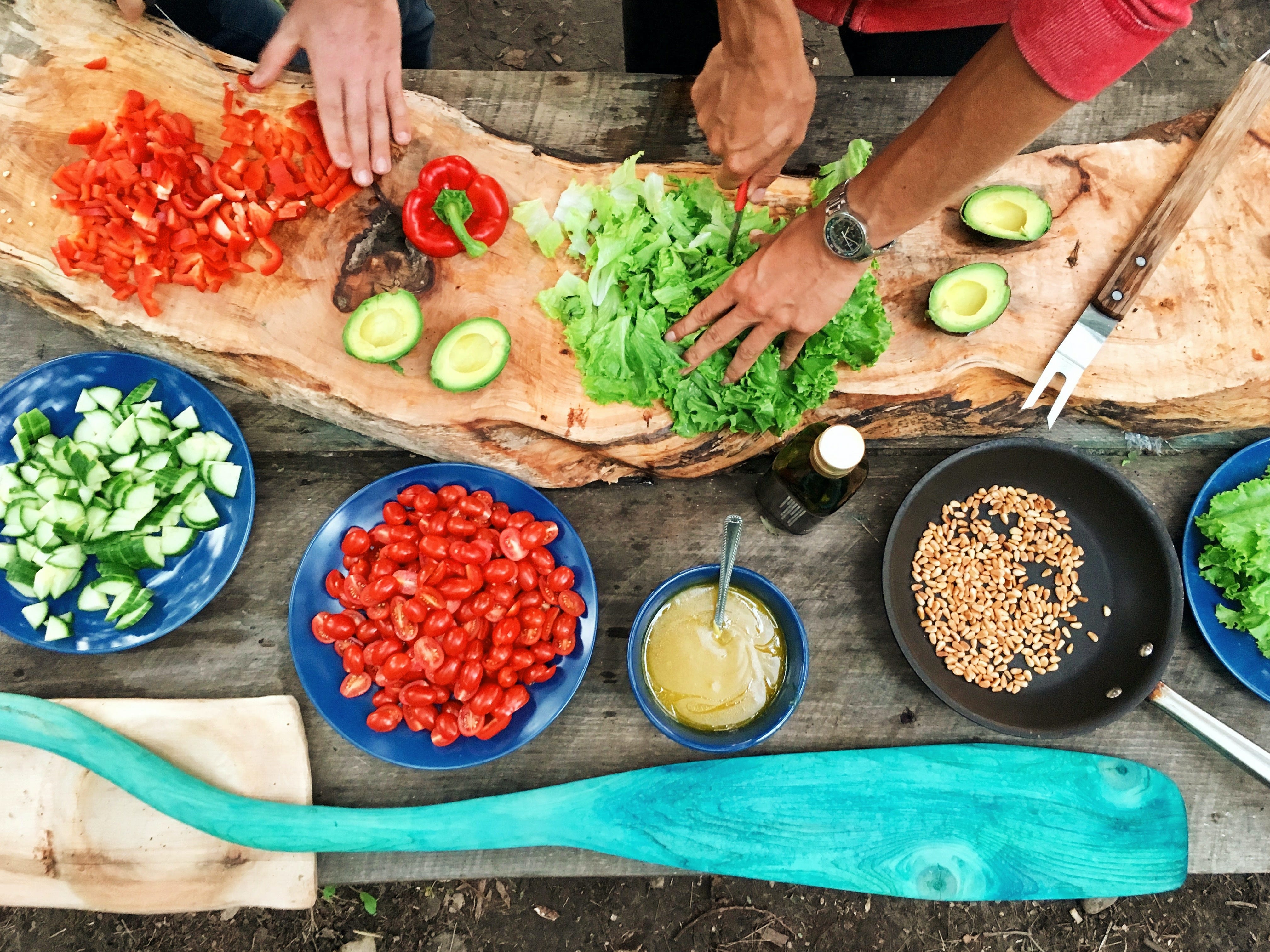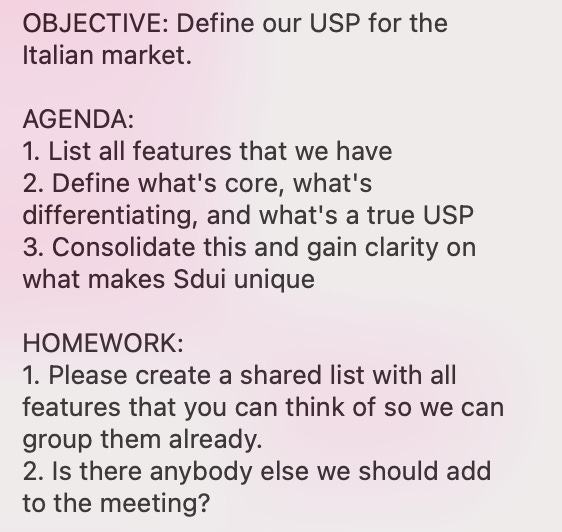International Generalist #10: Planning vs. Preparation, Breakfast Tricks, & DAPAR framework.
Your bi-weekly dose of actionable insights to make you just a tiny bit more effective.
Welcome to the 10th edition of International Generalist. Today, we’ll look at the difference between planning and preparation, a simple trick to burn more fat, a framework to structure your sales conversations, and my best 23 € investment of the past months.
If you don’t find this valuable, you can always unsubscribe at the bottom of this email. If you like it, tell your friends to subscribe here. It’s the best way to support this newsletter. :)
Let’s dive in.

[1] Planning vs Preparation
There is a difference between planning and preparing.
Planning your gym workout is putting it on the calendar, and identifying what you will do in that session.
Preparing your gym workout is packing your bag, laying out your clothes, and hydrating properly.
Planning a vacation means browsing the web for destinations, scheduling PTO, and writing a packing list.
Preparing a vacation means actually booking flights and accommodation, packing your suitcase, and making sure you don’t have to work on urgent things during it.
Planning your meals for the next week means writing out when you’ll eat what, and creating your shopping list.
Preparing your meals for the next week means shopping, chopping, and cooking. (It’s called “meal prep” for a reason).
Here’s an example that I use for my writing.
I’m planning a writing session on Sunday afternoon, 15:00, for 90 minutes (which is usually more than enough to write a typical newsletter … assuming I’m well prepared).
As preparation, I go through the following checklist:
Throughout the week, gather potential topics that I might want to feature
Before starting the session:
Put my phone away
Close Email / WhatsApp / LinkedIn / … on my computer
Grab a glass of water (+ depending on time of day, coffee)
Set a timer for 25 minutes (using the pomodoro technique)
Once I’ve set myself up for success, I can get started.
Same goes for professional contexts: for internal meetings, I always include a “prep work” section in the invite, so that everyone knows what to prepare before the meeting. Which - surprisingly - leads to successful meetings.

Planning and preparing still doesn’t save you from actually executing.
But having a plan and proper preparation makes execution as seamless as possible.
[2] A completely subjective trick to burning fat
A few weeks ago, I finally listened to my Strength and Conditioning coach (which I do … sometimes) and cut out most carbs from my breakfast.
Since, I’ve gotten noticeably leaner, without any other adjustments in my day-to-day life.
The adjustment?
Replacing oats & milk with just yoghurt, leading to significant less carbs - and thus to higher fat burn.
Now, I eat:
- An omelette consisting of 3 organic eggs, ~100g of sausage, and ~100g of spinach (+ herbs/spices to taste)
- A bowl of 100g strawberries, 50g blueberries, 25g nuts/almonds, 150g yoghurt (+ cinnamon to taste).
In the breakfast bowl, I replaced ~50g of oats and 200ml of milk with 150g of yoghurt and it made all the difference.
Cut carbs out of your breakfast (dark berries are OK), and observe what happens.
[3] A model for structuring your sales conversations
There are a myriad of ways to structure a sales call, and no conversation is the same. Here’s another one.
I recently learned this framework in a workshop, and have applied it a few times - with great success.
It’s called DAPAR.
- Definition: first, define your customer’s requirements & problems.
- Acceptance: then, find agreement with your customer that you’ve properly identified the problems and requirements.
- Proposed Solution: only then, start proposing your solution to the problems - which you’re now able to do, since you’ve correctly identified problem and requirements.
- Acceptance: once you’ve done that, get acceptance from your customer that what you’ve proposed will help him/her solve the problem.
- Reinforcement: only then, start with closing techniques, and reinforce the proposed solution through contract negotiation.
Most salespeople skip the “definition” part and go straight to the “proposed solution” part, and almost everybody forgets the two acceptance stages.
This model helped me streamline my discovery calls from start to finish, and left the prospect with no choice but to buy.
[4] Working on injury prevention … while working
Tim Ferriss often asks the question: “what investment of $100 or less has made a huge difference in your life recently?”
For me, that’s a balance pad.
I have a standing desk. Which is great.
I also have decided that whenever I’m in a meeting, I will stand, as it helps me focus.
Now, instead of just standing, I stand on one leg, balancing on my pad. My balance has gotten really good (of course, if you’re standing on one leg for >2h every day), ankle strength is better, and it’s a fun kinetic challenge during the day.
Does it look funny in a videoconference when you lose balance? Yes.
But is it worth it? Also yes!
—
Action item recap:
- When planning things, also think about preparation - and set yourself up for success.
- Try cutting out carbs (some berries are OK) at breakfast.
- Next time you have a sales conversation, use the DAPAR model.
- Get a balance pad for your standing desk.
—
That’s it for this edition of International Generalist. Thanks for tuning in and reading!
If you enjoyed this, please ask yourself: which one person that you know would most benefit from reading this newsletter? The number one way to support me is to share this with others aspiring to become more effective in their personal and professional lives.
Who’s behind International Generalist?
I’m Dominik, and every day, I try to figure out how to become a tiny bit more effective. Then, I share some of the lessons learned here.
When I’m not writing, I build the international business for Sdui - the Leading European SchoolOS -, play Lacrosse, lift weights and enjoy draft beers.
Here’s how else I can help you:
- Book a 1:1 meeting to discuss the international expansion strategy of your startup - please email me
- Read the newsletter archive for more actionable nuggets
- Connect on LinkedIn or Twitter for daily doses of insights
- Send me a question, so I can answer it in the newsletter or in a long-form blog post
See you in two weeks!
Much love
Dominik
Dominik Nitsch Newsletter
Join the newsletter to receive the latest updates in your inbox.


